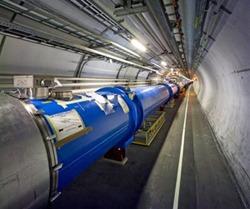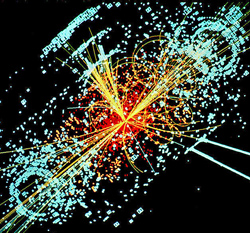Theoretical Elementary Particles

The goal of theoretical particle physics is to attain a fundamental description of the laws of physics, the constituents of matter and their interactions.
The standard model of particle physics was a huge step in this direction and has been one of the great scientific triumphs of the 20th century. However, many questions remain unsolved. Some examples are the nature of dark matter in the universe, the problem of mass generation, the nature of electroweak symmetry breaking, the role of supersymmetry and the quantization of gravity.

Other areas covered by the UCLA TEP group include studies in theoretical aspects of elementary particle physics, especially in supersymmetric quantum field theory, supergravity, superstring theory and its non-perturbative extension called M-theory; modern theories of gravitation and unification of fundamental interactions through the principle of symmetries; astroparticle physics and the problems of dark matter; string theory as a theory of quantum gravity; measurement of extragalactic background light and ultra-high energy cosmic rays; and nonperturbative aspects of field theory such as the infrared behavior of QCD and the phenomenon of quark confinement.